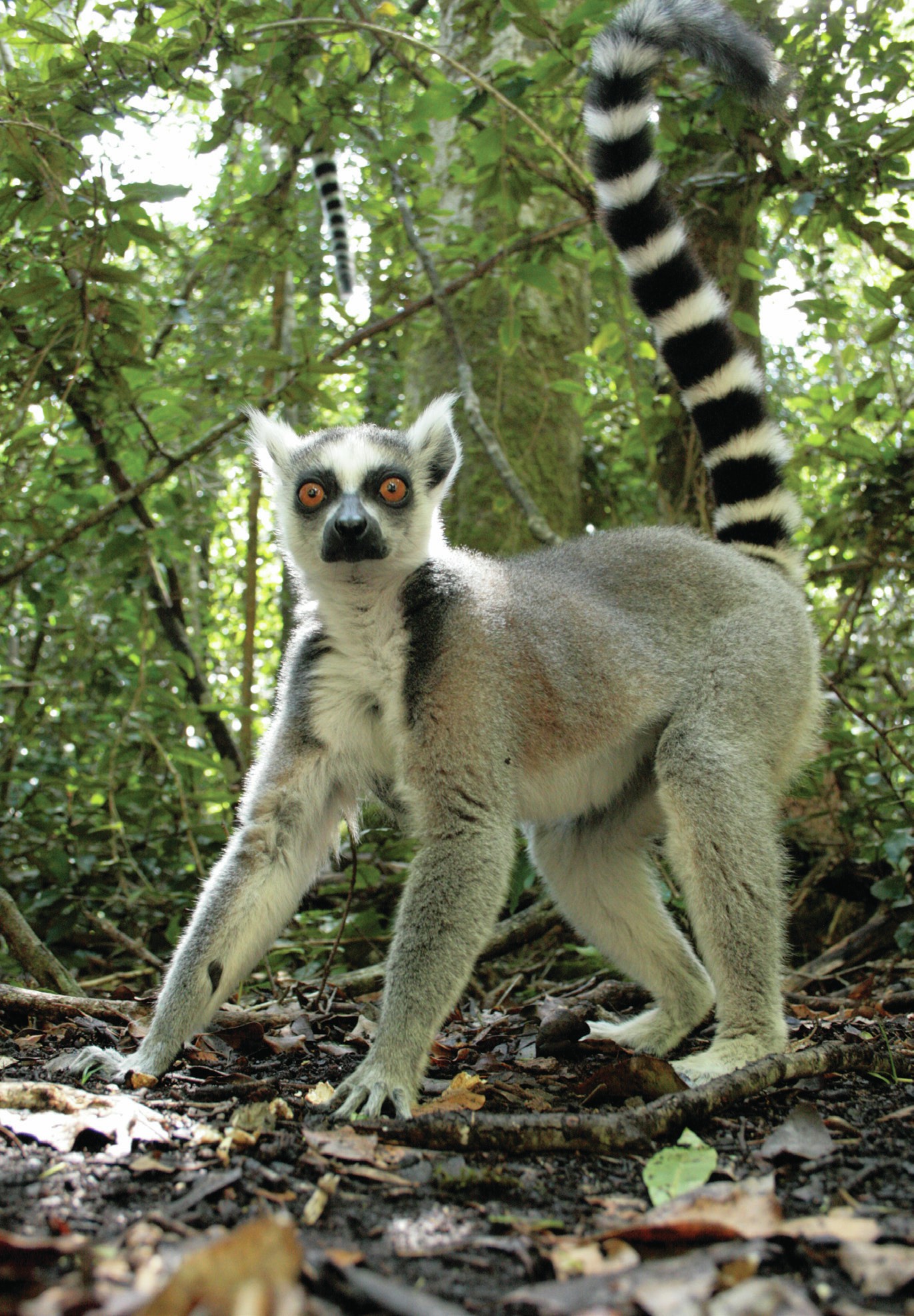
If you have a tail, why not use it? This is exactly what male ring-tailed lemurs in Madagascar do during fights with other males. However, they don’t just wave their tails around, they use them to send scent messages. This smelly tail waving is called a ‘stink fight’.
If you watch your favourite television programme with the sound and sub-titles switched off, you might be able to follow some of the story but probably not all of it. Much the same can be said of watching a group of ring-tailed lemurs going about their daily routine. You can see what they are doing and hear their calls, but you will be unaware of an important part of their communication. This is because much of their communication is done not with sound but with smell. As you watch, you will see lemurs sniffing tree branches and each other, rubbing their bottoms on tree trunks and waving their tails at each other (Figure 1). All these behaviours are part of their repertoire of scent marking and investigation. They give the lemurs information about which are the leaders or dominant animals, which female is ready to mate and which strange ring-tails have been in the area.
Your organisation does not have access to this article.
Sign up today to give your students the edge they need to achieve their best grades with subject expertise
Subscribe




